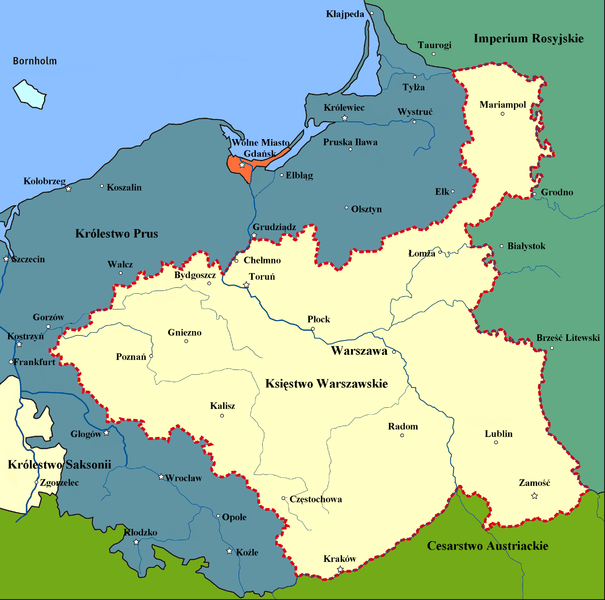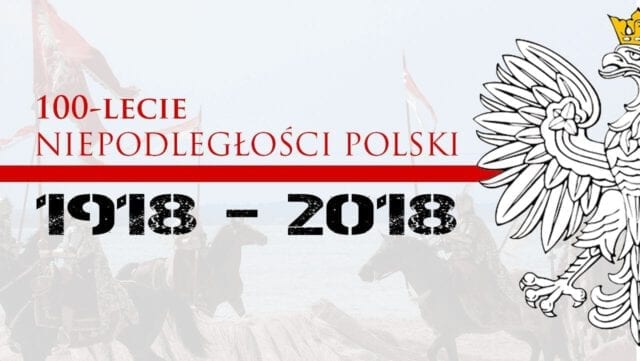The 100th anniversary of Poland's independence is a great occasion to remember our way to freedom. In the years 1772-1795, the then Polish-Lithuanian Commonwealth was completely partitioned, which consequently wiped out our homeland from the map of Europe for 123 years.
Partitions of Poland - How Did It Happen?
This year's 100th anniversary of Poland's independence is preceded by years of fighting for freedom. It was lost as a result of the partitions, the official genesis of which was the country's inability to carry out reforms aimed at strengthening its military strength. Despite the fact that the then Polish-Lithuanian Commonwealth had adequate economic potential, it was not possible to introduce tax and political changes. For the proper functioning of statehood, the nobility and clergy had to be taxed and abolished liberum veto and serfdom.
Targowica Confederation
The betrayal of some magnates, nobility and higher clergy within the Targowica confederation played a significant role in blocking the reforms of the country. The plot was established on the night of May 18-19, 1792 in Targowica. The watchword was "defense of the threatened freedom”As a result of the actions of the Four-Year Seym and the adopted Constitution of May 3, which was considered a national treason. It is not without significance that the Targowica Confederation was concluded in agreement with the Empress of Russia - Catherine II the Great.
Read also: 100th Anniversary of Poland's Independence - Highlanders in Norway >>>
Polish-Russian war in 1792
The Polish magnates did not want to submit to the reforms passed by the Four-Year Sejm, which significantly limited the rights of this social group. Therefore, they applied for help to Catherine II, which in turn led to the entry of Russian troops into Polish territory. Despite the fact that the troops led by Fr. Józef Poniatowski and General Tadeusz Kościuszko won victories at Zieleniec and Dubiniec, Russian troops reached the Vistula. This prompted the king of Poland to join the Targowica Confederation. The fighting ended on July 25, 1792 by order of Stanisław August Poniatowski. As a consequence, the inhabitants of Targowicz took over all voivodeships, thus liquidating the organs of the Four-Year Sejm.
Claims of neighboring countries
The Targowica Confederation could have been formed as a result of Catherine II's claims against Polish lands. They were based on the unofficial recognition by the Republic of Poland of the title of Tsarina of All Russia. This allowed Catherine II to also be a guarantor of the political system of the Polish-Lithuanian Commonwealth. Under these provisions, Russia made claims against the lands of the Kingdom of Poland and the Grand Duchy of Lithuania.
Read also: The Polish Anthem - are you sure you know everything about it? >>>
Another significant factor is the fact that, as a result of pressure from the primate of the interrex, Aleksander Łubieński, the title of King Frederick II of Prussia was unofficially recognized. During the partitions, the ruler of Prussia raised the argument that once East Prussia was an integral part of Royal Prussia. At the same time, the Austrian Habsburgs, who were kings of Hungary, were claiming the right to Halych-Volodymyr Rus.
There were three invaders
The above factors contributed to the partitions of the Polish-Lithuanian Commonwealth. The first phase of this process took place in 1772, and the invaders were Prussia, Russia and Austria. Only Russia and Prussia took part in the second partition, and it took place in 1793. The third partition of Poland took place in 1795, and Polish lands were again seized by Prussia, Russia and Austria. It meant the end of our homeland's independence.

Source: Wikimedia Commons.
Not all countries recognized the partitions
It is worth emphasizing that, in principle, all the then European states recognized the partitions of Poland. The exception was the Ottoman Empire, which never recognized the liquidation of the Polish-Lithuanian Commonwealth as a result of the partitions. There was a legend back then that the Turks used to say "The deputy from Lechistan has not arrived yet" on the occasion of each presentation of ambassadors and diplomats.
Read also: Squadron 303. in cinemas >>>
100th Anniversary of Poland's Independence - the Kościuszko Uprising
It is worth emphasizing that Poles have never come to terms with the idea of losing their own state. Even before the third partition, on March 12, 1794, the Kościuszko Uprising broke out. It was a Polish national uprising directed against Russia and Prussia. The pre-insurrection conspiracy was established abroad in December 1792, and the main center was Saxony (Dresden and Leipzig). Hugo Kołłątaj, Ignacy Potocki and Tadeusz Koścuszko were the main figures who signed the agreement. Officially, the uprising ended in failure on November 16, 1794, but in Kujawy and Greater Poland the fighting continued until December.

Picture: Kościuszko near Racławice
Napoleon Bonaparte and a substitute for independence
In the years 1807-1815, the Duchy of Warsaw was established, which, however, remained dependent on the French Empire. Napoleon Bonaparte could not make Poland an independent country because on November 25, 1795, King Stanisław August Poniatowski abdicated in favor of Empress Catherine II. Thus, it was Russia that became the depository of the Polish crown, and without her consent, the Emperor of France could not establish an independent Polish state. He did so only in 1812, establishing the General Confederation of the Kingdom of Poland, which declared war on Russia. The substitute of Poland's political freedom was dissolved in 1815 under the Congress of Vienna, which was a direct consequence of the defeat of Napoleon Bonaparte in 1812.
Read also: The Warsaw Uprising is already 74 years old >>>

Duchy of Warsaw, photo Wikimedia Commons.
100th Anniversary of Poland's Independence - the road to freedom
The defeat of Napoleon and the lost hopes for independence did not lower the morale of Poles. This is evidenced by a total of 7 national-liberation uprisings that took place until the Polish Revolution in 1905. These were the following events:
- Greater Poland Uprising in 1906,
- November Uprising in 1830-1831,
- the Krakow Uprising in 1846,
- The Spring of Nations in 1848,
- Greater Poland Uprising in 1848,
- January Uprising in 1863-1864,
- the Zabajkal Uprising in 1866.
The Polish Revolution in 1905
The Polish Revolution of 1905 was of great importance. It broke out as a result of the tense situation in industrial centers, which was a consequence of the deteriorating working conditions, as well as information about the failures in the war between Russia and Japan, which was considered a disgrace. It all started on January 15, 1905, when PPS and SKDPiL called for over 400 people to strike. employees. In total, in the years 1905-1906, 6991 strikes broke out, in which 1,3 million workers took part.

Bloody Sunday in 1905, painting by Wojciech Kossak.
Benefits of the Revolution
The first effects of the Revolution of 1905 came quickly, already in April of the same year. As a result of the strikes, the Tsar of Russia agreed to make concessions. There was an opportunity to create Polish organizations under the Russian partition, which resulted in the creation of such institutions as: Polska Macierz Szkolna and the Cooperative Society. Censorship was also erased, religious freedom was established, and the use of the Polish language was also allowed in communal offices. The provisions were broken very quickly, already in the years 1906-1907. Poles lost all their privileges, and living conditions under the Russian partition deteriorated again.
Read also: The Polish School in Moss is recruiting >>>
Regaining independence by Poland
Poles had to wait for a free and sovereign state until November 11, 1918. The first signs of the coming freedom were the announcement on November 6, 1915 of the establishment of the Kingdom of Poland by Prussia and Austria-Hungary. The emergence of this political entity became a reality in October 1917, when the German and Austrian occupation authorities established Polish authorities in the Kingdom.
Poland gained formal independence from Russia only on March 29, 1918, as a consequence of the entry into force of the peace treaty between the Central Powers and the Bolshevik government. government of Russia. Officially, the day of establishment of the independent Polish state is November 11, 1918 - then Germany formally capitulated in World War I and the peace plan of the President of the United States, Thomas Woodrow Wilson, came into force. It is worth emphasizing that the solutions he proposed took into account the independent Polish state, which from then on was known as the Second Polish Republic.
100th anniversary of Poland's independence
The creation and formation of the system of the Second Polish Republic was only the beginning of a fully sovereign and independent state. However, they allowed independence from neighboring countries and finally the Polish authorities could represent their interests on the international arena. This year's 100th anniversary of Poland's independence is preceded by a period of occupation during World War II and the imposition of the communist regime, which was formally abolished in 1989. This is a story worth knowing in order to be able to fully appreciate the freedom we did not have in 1795-1918.





